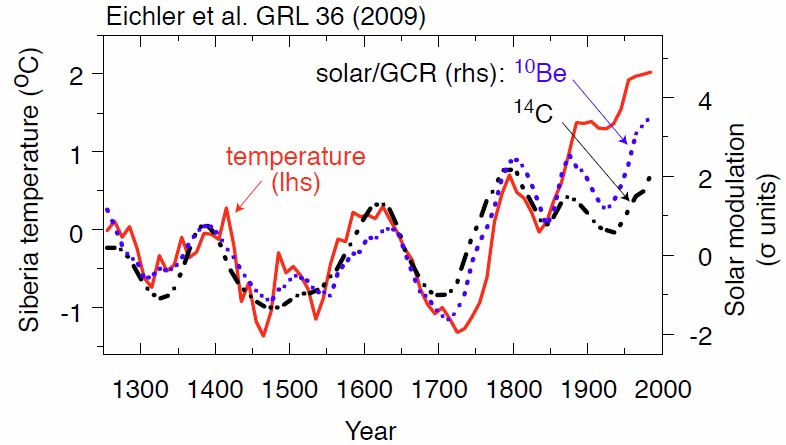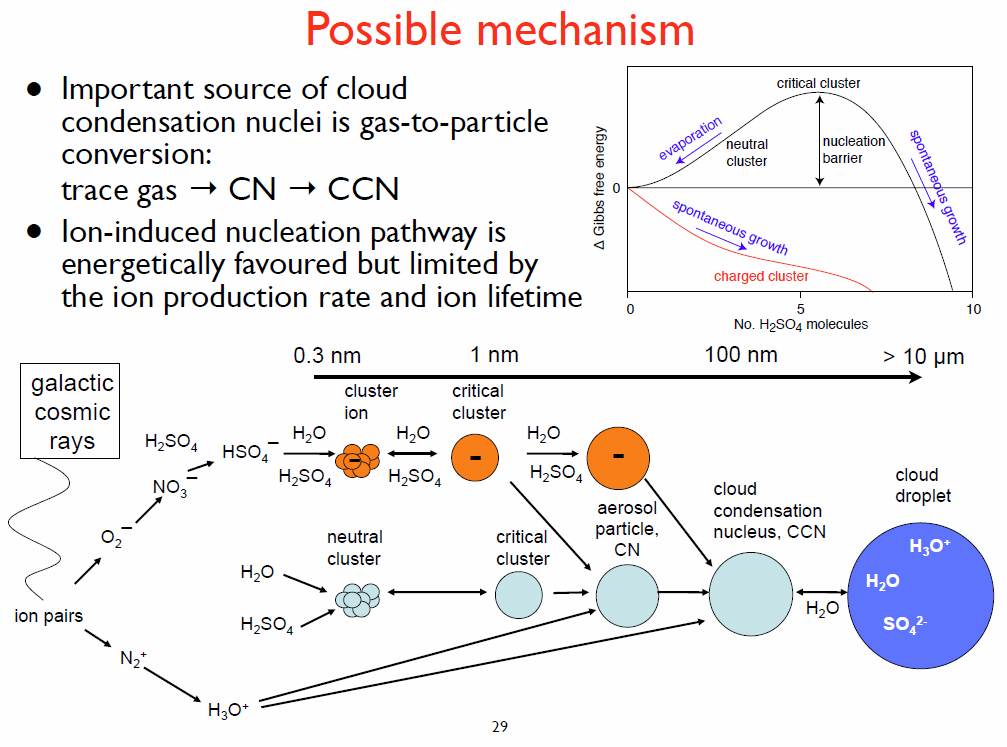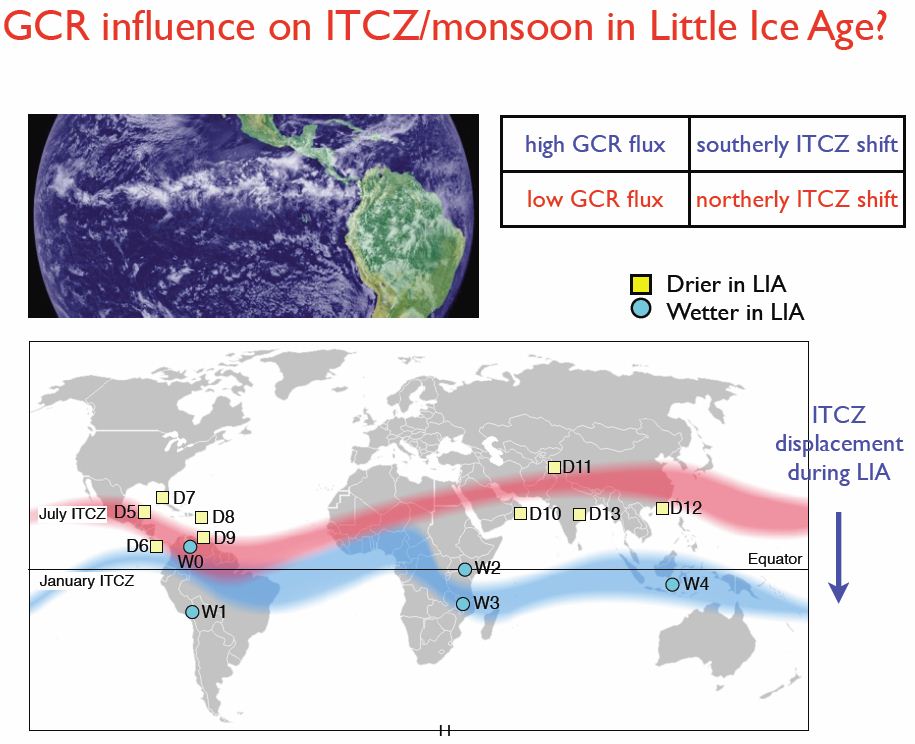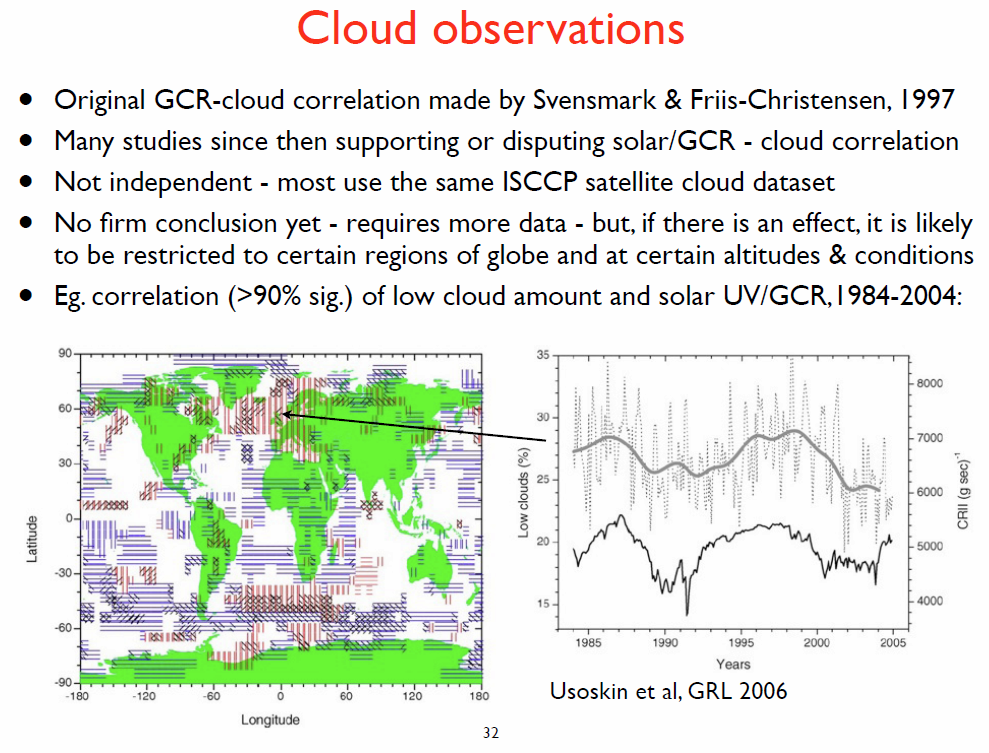
I get so many tips now it is hard to choose, but this one is a gem. If you look at nothing else this month, please take the time to download the slide show from CERN's Jasper Kirkby at the end of this article.
He does a superb job of tying it all together. I found Kirkby's slide show quite interesting, and I've grabbed some slides for our WUWT readers. He proposes a GCR to cloud droplet mechanism, which to me, makes sense meteorologically. He also touches on the possibility that the Inter-Tropical Convergence Zone (ITCZ) may have been shifted due to GCR modulation during the LIA/Maunder Minimum. This ties in with Willis Eschenbach's theories of the ITCZ being a "thermostatic mechanism" for the planet with some amplification effects. - Anthony
Norm Potter writes in Tips and Notes for WUWT with this-
The end is near for the warmists, I suspect. This month, Jasper Kirkby of CERN explained the Centre's CLOUD experiment, which is moving forward:
"The current understanding of climate change in the industrial age is that it is predominantly caused by anthropogenic greenhouse gases, with relatively small natural contributions due to solar irradiance and volcanoes. However, palaeoclimatic reconstructions show that the climate has frequently varied on 100-year time scales during the Holocene (last 10 kyr) by amounts comparable to the present warming - and yet the mechanism or mechanisms are not understood. Some of these reconstructions show clear associations with solar variability, which is recorded in the light radio-isotope archives that measure past variations of cosmic ray intensity. However, despite the increasing evidence of its importance, solar-climate variability is likely to remain controversial until a physical mechanism is established.I found this side on page 29 to be plausible from a meteorological standpoint:
"Estimated changes of solar irradiance on these time scales appear to be too small to account for the climate observations. This raises the question of whether cosmic rays may directly affect the climate, providing an effective indirect solar forcing mechanism. Indeed recent satellite observations - although disputed - suggest that cosmic rays may affect clouds. This talk presents an overview of the palaeoclimatic evidence for solar/cosmic ray forcing of the climate, and reviews the possible physical mechanisms. These will be investigated in the CLOUD experiment which begins to take data at the CERN PS later this year."
Here is a slide showing the ITCZ shift he's proposing:
And here is the data and some conjectures, obviously more data is needed. However what is seen so far certainly seems far from "discredited" as some warmists say.
In the conclusions of his slide show, Kirkby outlines the state of knowledge and areas of investigation:
- Climate has continually varied in the past, and the causes are not well understood - especially on the 100 year timescalerelevant for today's climate changeMore info, see: The CERN Colloquium
- Strong evidence for solar-climate variability, but no established mechanism. A cosmic ray influence on clouds is a leading candidate
- CLOUD at CERN aims to study and quantify the cosmic raycloud mechanism in a controlled laboratory experiment
- The question of whether - and to what extent - the climate is influenced by solar/cosmic ray variability remains central to our understanding of anthropogenic climate change
Download Kirkby's Slide show (Large 7.8 MB PDF, or here, be patient)






Reader Comments
to our Newsletter